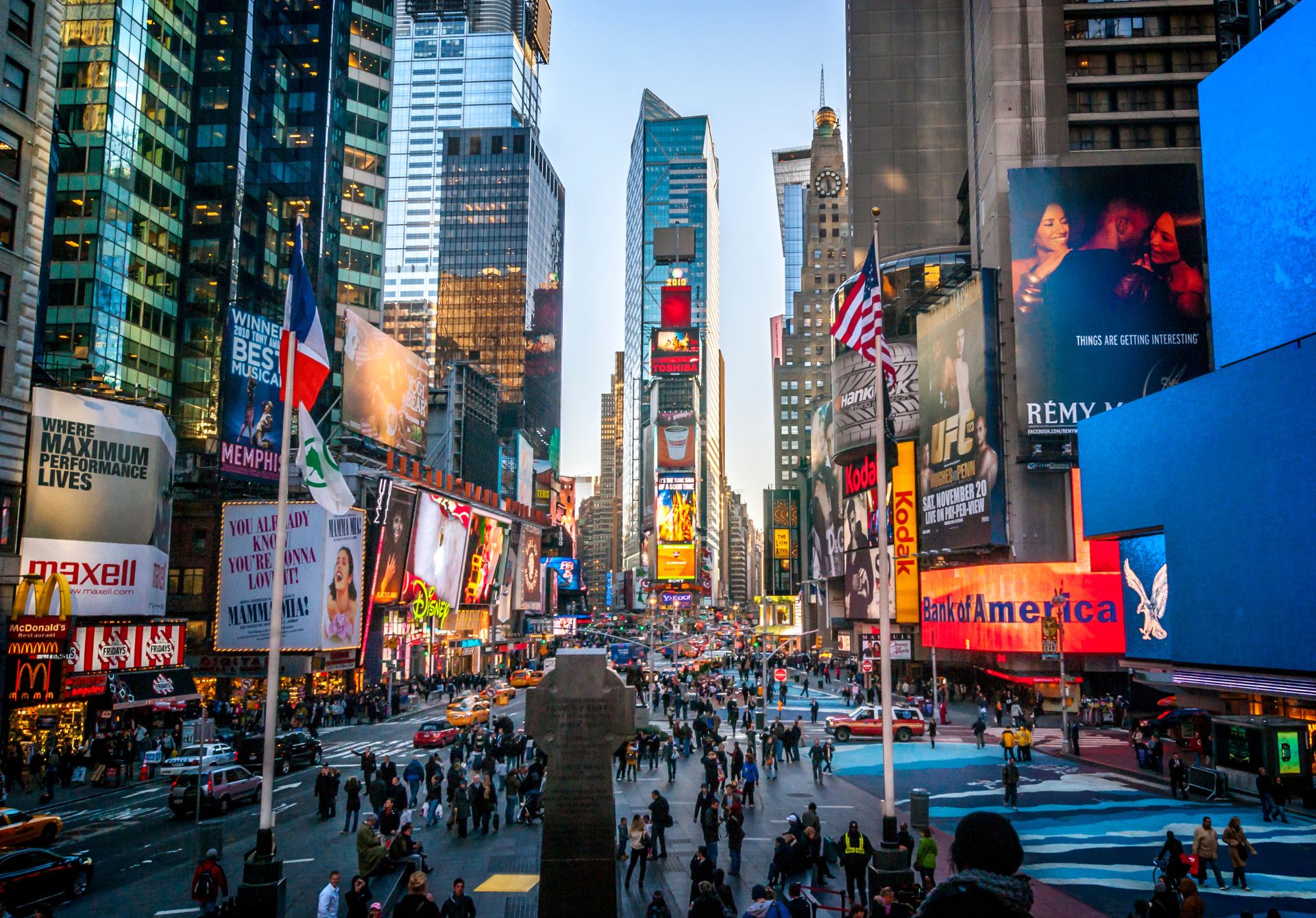Times Square, originally known as Longacre Square, was renamed in 1904 after The New York Times moved its headquarters to the newly constructed Times Building. The area transformed from a district of horse exchanges and carriage houses in the late 19th century to become the entertainment nucleus of New York City. The installation of the first electrified advertisement in 1904 marked the beginning of Times Square’s iconic bright lights and billboards.
The Great White Way
Broadway’s Theater District, nicknamed “The Great White Way” due to its brilliant illumination, forms the heart of Times Square. With over 41 professional theaters, it represents the highest concentration of entertainment venues in the world. In 2019, Broadway shows attracted a record 14.8 million attendees, generating $1.8 billion in revenue, demonstrating the enduring appeal of live theater in the digital age.
Economic Impact and Commercial Significance
Times Square serves as a powerful economic engine for New York City. The district generates approximately $1.2 billion in annual retail sales and attracts over 50 million visitors yearly. The iconic billboards and advertising displays, known as “spectaculars,” can command rates exceeding $2.5 million annually for prime locations. The area houses over 1,500 businesses and employs more than 170,000 people, making it one of the most commercially significant areas in the United States.
Urban Transformation
The 1990s marked a pivotal moment in Times Square’s history. Under Mayor Rudolph Giuliani’s administration, the area underwent a dramatic renovation that transformed it from a notorious red-light district into a family-friendly tourist destination. The Disney Store’s arrival in 1995 symbolized this transformation, leading the way for other major corporations to establish flagship stores in the area. In 2009, the implementation of pedestrian plazas further revolutionized the space, creating more walkable areas and reducing traffic congestion.
Cultural Impact
Times Square has become synonymous with New York City’s cultural identity, featuring prominently in countless films, television shows, and literary works. The annual New Year’s Eve ball drop tradition, started in 1907, now attracts over one million spectators and is watched by billions worldwide. The TKTS booth, established in 1973, has sold over 65 million theater tickets, making Broadway performances accessible to broader audiences through discounted rates.
Modern Challenges and Innovation
Today, Times Square faces new challenges and opportunities. The COVID-19 pandemic significantly impacted tourist numbers and business operations, but also spurred innovation in digital advertising and virtual experiences. The area has embraced sustainable technology, with many billboards now powered by renewable energy sources. The Times Square Alliance continues to work on improving public spaces and maintaining security while preserving the district’s vibrant character.
Times Square stands as a testament to urban resilience and reinvention. From its humble beginnings as Longacre Square to its current status as a global icon, it continues to evolve while maintaining its position as the “Crossroads of the World.” The district’s ability to adapt to changing times while preserving its essential character makes it not just a tourist destination, but a symbol of New York City’s enduring vitality and cultural significance. As Times Square moves forward, it remains a powerful example of how urban spaces can be transformed and reinvented while maintaining their historical importance and cultural relevance.
